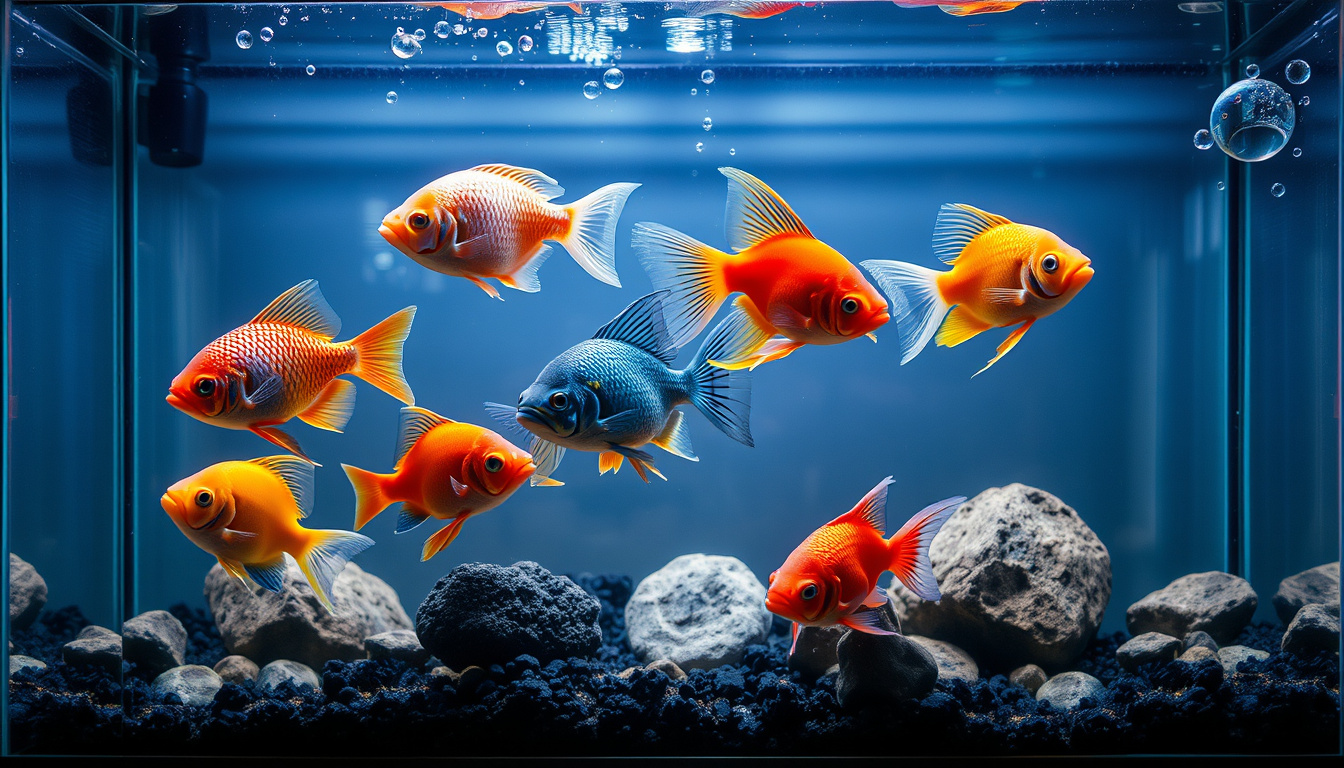
Top Fish Species for Home Aquariums: Ultimate Care Guide
On July 11, 2025 by Andy FordKeeping fish at home brings calm and joy. Fish at home add life, teach care, and show beauty. In this guide, we point out some good fish species for your tank, explain each one’s needs, and give fast tips to keep your fish well.
Why Picking the Right Fish Species Matters
Not all fish share needs or moods. Some do well in freshwater; some need saltwater. Pick fish that fit your tank’s size, water rules, and your skill. A good pick keeps water clean, matches friends, and helps fish live longer. This guide shows popular, beginner-friendly, and bright fish, each with clear care advice.
Top Fish Species Ideal for Beginners
If you are new to fish keeping, try fish that are tough, simple to care for, and do well in many tanks.
1. Betta Fish (Betta splendens)
- Tank size: Minimum 5 gallons
- Water temperature: 76-82°F (24-28°C)
- Diet: Carnivorous – betta pellets, frozen, or live foods
- Care tips:
Betta fish show bright colors and long fins. They live alone and mark their space. Keep one male per tank. Bettas like calm water and many small plants for shelter.
2. Guppy (Poecilia reticulata)
- Tank size: Minimum 10 gallons
- Water temperature: 72-82°F (22-28°C)
- Diet: Omnivorous – flakes, frozen, and live foods
- Care tips:
Guppies bear live young, breed easily, and are tough. They do well with other calm fish. Clean water and proper feeding keep them strong.
3. Neon Tetra (Paracheirodon innesi)
- Tank size: Minimum 10 gallons
- Water temperature: 68-78°F (20-26°C)
- Diet: Omnivorous – flakes and micro-pellets
- Care tips:
Neon tetras swim in groups of six or more and like tanks with many plants. Their blue and red stripes bring bright light to any tank.
Popular Fish Species for Intermediate Aquarists
If you have some skill and a well-set tank, these fish show bright hue and fun behavior and need more care.

4. Angelfish (Pterophyllum scalare)
- Tank size: Minimum 20 gallons
- Water temperature: 75-82°F (24-28°C)
- Diet: Omnivorous – flakes, pellets, frozen foods
- Care tips:
Angelfish look grand and sometimes guard their space. They use tall water areas and do best in still water with steady rules. Do not mix with fish that nip fins.
5. Corydoras Catfish (Corydoras spp.)
- Tank size: Minimum 15 gallons
- Water temperature: 72-78°F (22-26°C)
- Diet: Bottom feeder – sinking pellets, flakes, occasional live foods
- Care tips:
Corydoras fish work at the bottom to clear extra food. They live well in groups of four or more. They like fine gravel that keeps their barbs safe.
6. Swordtail (Xiphophorus hellerii)
- Tank size: Minimum 20 gallons
- Water temperature: 72-82°F (22-28°C)
- Diet: Omnivorous – flakes, frozen, live foods
- Care tips:
Swordtails are active and friendly. Their long tail makes them stand out. They breed with ease. Be ready for many small fish or keep genders separate.
Advanced Fish Species for Experienced Aquarists
Some fish bring a special look to your tank but need a skilled handler because they can act tough or are sensitive.
7. Discus (Symphysodon spp.)
- Tank size: Minimum 50 gallons
- Water temperature: 82-86°F (28-30°C)
- Diet: Omnivorous – quality pellets, frozen, live foods
- Care tips:
Discus earn the title "King of the Aquarium." They need very clean water, warm heat, and many plants. Feeding them small meals several times a day helps their health.
8. Clownfish (Amphiprioninae)
- Tank size: Minimum 30 gallons (marine setup)
- Water temperature: 74-79°F (23-26°C)
- Diet: Carnivorous – marine pellets, flakes, frozen foods
- Care tips:
Clownfish are saltwater species. They live in marine tanks that keep stable salt levels. They do well and are known to live with sea anemones in the wild.
9. Flowerhorn Cichlid
- Tank size: Minimum 55 gallons
- Water temperature: 78-84°F (25-29°C)
- Diet: Omnivorous – high-protein pellets, live, and frozen foods
- Care tips:
Flowerhorn cichlids have a bold head bump and can be fierce. They need large tanks, clean water often, and should live alone or with strong fish.
Essential Care Tips for All Fish Species
No matter which fish you pick, these tips help keep your tank in good shape:
- Keep water clean: Use good filters and do regular water changes (about 25% each week). Check pH, ammonia, nitrite, and nitrate.
- Feed the right amount: Do not add too much food as it can spoil the water. Serve small amounts that match each fish’s diet.
- Set up the tank: Use real or fake plants, rocks, and hiding spots. This makes the world of the tank more like nature.
- Watch fish for signs: Bet on their behavior, shape, or color; these may show if they fall sick. Let new fish stay alone for a short time.
- Choose the tank size: Match it with the fish so they have space to swim.
Quick Summary: Best Fish Species by Difficulty
| Fish Species | Difficulty | Tank Size | Water Type |
|---|---|---|---|
| Betta | Beginner | 5 gallons | Freshwater |
| Guppy | Beginner | 10 gallons | Freshwater |
| Neon Tetra | Beginner | 10 gallons | Freshwater |
| Angelfish | Intermediate | 20 gallons | Freshwater |
| Corydoras | Intermediate | 15 gallons | Freshwater |
| Swordtail | Intermediate | 20 gallons | Freshwater |
| Discus | Advanced | 50 gallons | Freshwater |
| Clownfish | Advanced | 30 gallons | Saltwater |
| Flowerhorn Cichlid | Advanced | 55 gallons | Freshwater |
Frequently Asked Questions (FAQ)
Q1: What fish work best if I am new?
A1: Betta, guppy, and neon tetra do well for beginners. They adapt and need simple care.
Q2: How do I pick fish that live friendly in a community?
A2: Choose kind fish with like water needs and mild temperaments. Do not mix with fish that fight.
Q3: Which fish need saltwater?
A3: Fish like clownfish, tangs, and damselfish need a saltwater tank with steady salt levels and proper gear.
Authoritative Resource
For more fish care tips and tank help, try sites like the Fancy Goldfish Association or check advice from fish experts (source).
Final Thoughts: Start Your Aquarium Journey Today
The right fish pick builds a strong tank. Whether you start with tough bettas or wish to show rare discus or bright clownfish, knowing each fish’s needs is key. With well-measured food, steady water, and a safe space, your fish will live well and bring you joy.
Why wait? Dive in, build your small aquatic home, and enjoy watching life thrive. Happy fish keeping!

Leave a Reply